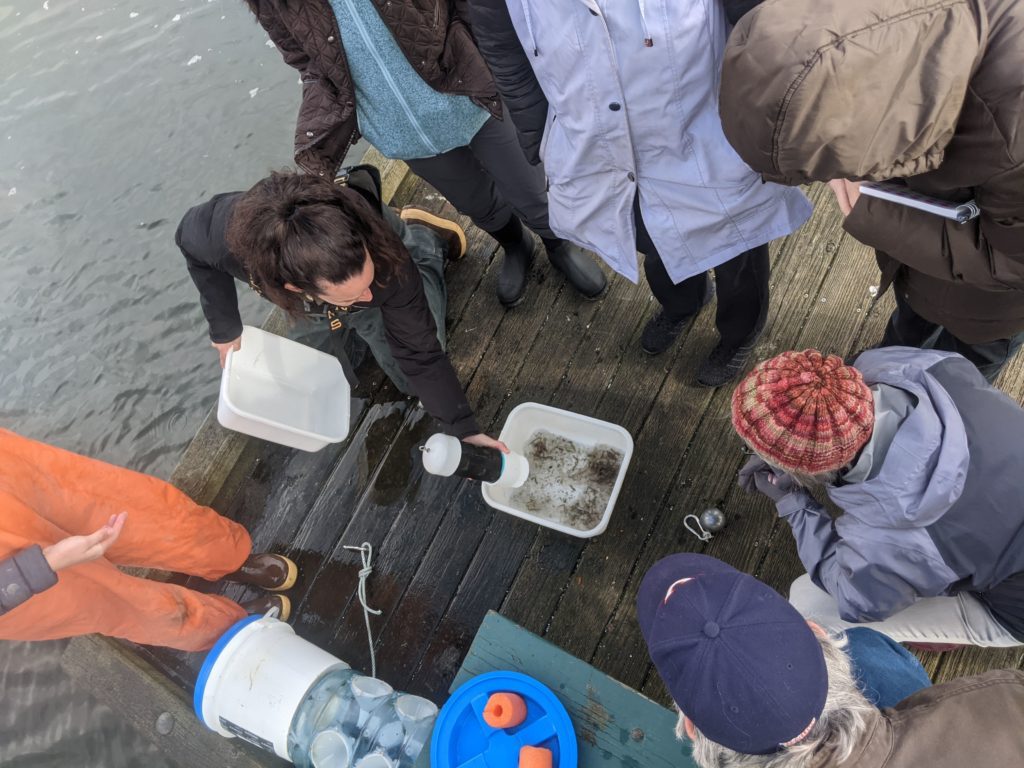All the wiggly, crawly, odd marine creatures come out at night. Nematodes, bioluminescent algae, tiny translucent fish, you name it. The Salish Sea never sleeps.
Research from the Oregon coast has shown that megalope populations can predict adult crab populations four years ahead. This is vital information for setting fishery limits and improving habitat protection plans so crabs can continue to be caught sustainably. Many local Tribes are looking to Dungeness crab fisheries as salmon fisheries continue to dwindle. We’ve teamed up with the Swinomish Fisheries Department and the Pacific Northwest Crab Research Group to help gather data in Washington with volunteer power.

Several years before they grow into the succulent crustaceans that support one of the most important Tribal and commercial fisheries in our region, baby Dungeness crabs are one of these small creatures, suspended in the water during their larval stage of life. These larvae are called megalopes, which is a fun word and also what marine biologists and our North Sound Stewards community science volunteers use to help predict populations of adult Dungeness crab.

How does it work?
While the methods scientists and volunteers use are precise, the actual equipment is pretty simple — not all science requires fancy lab equipment! A light trap is basically a big water jug with properly sized holes, an LED light to draw nocturnal critters just like moths, and a removable bottom portion with mesh to filter out the critters when it’s removed from the water.
Then volunteers put the critters in a basin of sea water and remove any “large” fish — on this scale, we’re talking things like juvenile salmon, stickleback, or even small octopuses which are drawn to light Some volunteers use kitty litter scoops to sort out marine worms, which can be in large wriggling, messy, tangled balls that make it hard to count crabs (like we said — not all science is lasers and microscopes). They hand-count how many crab megalopae are in the basin and spoon them into a separate dish as they count. All the crabs and other flustered invertebrates are then returned to the water and the light trap reset.

What have we learned from counting Dungeness crab?
This project is still in its early stages, so it’s hard to say yet. Our local light traps in Whatcom County found hundreds of crabs each time traps were checked. Some parts of Washington’s coast have seen over 1,000 per sample. We’re hoping we can get a Salish Sea-wide view of larval crab dispersal and more accurate numbers to better manage the fishery. More volunteers make for quicker counting, since hand-counting all these tiny crabs takes time.
If you’ve ever enjoyed a tasty crab meal, or you simply appreciate the cultural and ecological importance of Dungeness crab, you can get involved! When you sign up to be a North Sound Steward and volunteer to help gather data on crabs, critical forage fish like herring, and more, you are helping keep the Salish Sea healthy for years to come.
